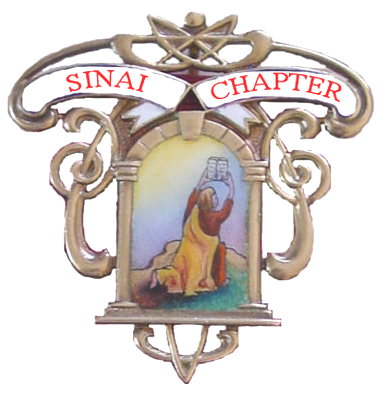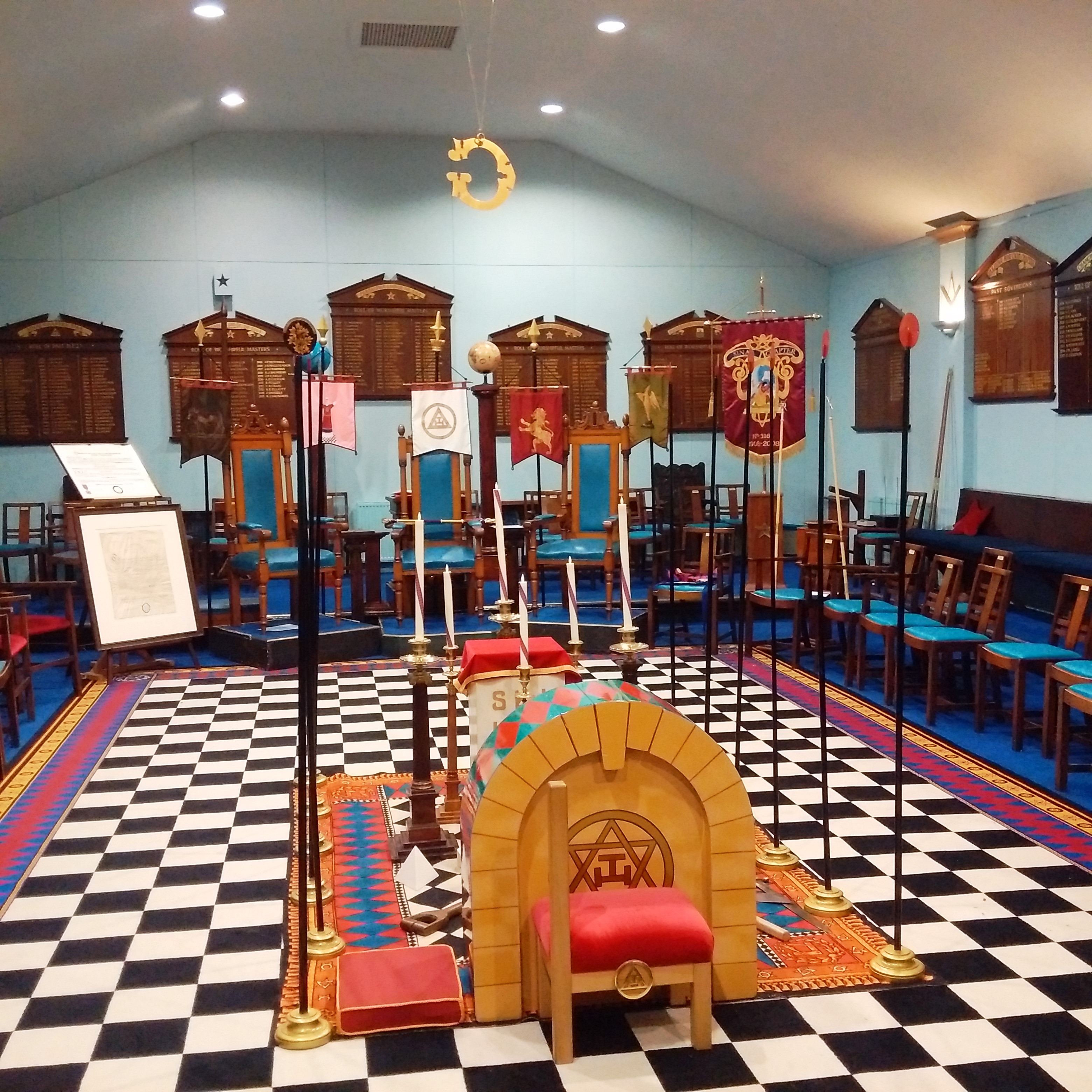Sinai Chapter - Our Symbols
Home Calendar Subscriptions Lodge Officers
History Founders The Sinai Symbols Past MEZs Contact Us

Sinai has further importance within Freemasonry as being the site of the First or Holy Lodge, constructed just two years after the Exodus of the Children of Israel from their Egyptian bondage, and 477 years before King Solomon's Temple, the Second or Sacred Lodge. It would be another 477 years before the The Third or Grand and Royal Lodge was opened by Zerubbabel, Prince of the people, Haggai the prophet; and Jeshua*, the son of Josedech the High Priest.
* In Sussex Royal Arch, Joshua is replaced by Jeshua.
Opening and Closing Hymns
We know that the opening and closing hymns have been sung in our Chapter for as long as anyone can remember and that back to 1951! But when did it start?
The Minute Book tells us that an organist (J.W.Boxall) was first appointed in January 1935 but it was not until September 1981 when the Minute Book states that the opening and closing hymns were sung. Was this an omission by the scribe E that it was in fact sung but not recorded or did it just start then, if so by what authority? No Minute exists to give approval, so what happened?
The Twelve Staves
The twelve staves are a most unusual feature, Where did they originate?
The late E. Comp. H.J. Hurst joined the Chapter soon after WWll and later took over as Scribe E. He went to considerable trouble to find answers on behalf of the Lodge of Research No 2429 in Leicester about the Latin mottos on our staves. This much we know as we have in our possession an original transcript of a paper written and given in the Chapter by E. Comp. Joe Hurst and later by E. Comp. Marc Sale when he was MEZ.
This Lodge of Research appears to have discovered that only about 16 Chapters use them, and the earliest one was dated 1786 and the most recent was our own, founded as we know in 1908.
According to E. Comp. Joe Hurst, it seems almost certain therefore that our own set of staves came as secondhand furniture originally belonging to some unknown earlier discontinued Chapter.

The Roman Sword
How did the Roman sword come to be in our possession? Almost certainly by the same route, although it does bear some resemblance to the poniard used by the Inner Guard in the Lodge room.
The Five Platonic Bodies and the Royal Arch Jewel
Most Royal Arch Chapters have the five Platonic Bodies placed just to the west of the candles, arranged in descending order from north to south. These Bodies are geometrically 'regular solids'; that is, the faces of a particular solid are the same shape and size.
The proof that there could only be five regular solids was confirmed by Pythagoras (582-500 BC) and his disciples. Theaetetus (417-369 BC) gave descriptions of all five, and provided the first known recorded proof. But it is likely that the Babylonians knew this a thousand years before that! In the Ashmolean Museum at Oxford, there is a set of five stone models of the Solids discovered at a Neolithic site in Scotland. This predates the Plato era by well over a thousand years. Euclid (325-265 BC) recorded all of the then-known facts in his book “The Elements". His proofs, in modern-day words, showed that there can only be five regular solids.
Sinai Chapter's Founding Zerubbabel, Professor Thomas Woodman, a private tutor living in the 'Old House’ at the top of Church Hill, Pulborough, probably knew this long before his connections with Royal Arch Masonry. And as Founding Master of Pentalpha Lodge, he must have recognised the mathematical significance of the pentagram.
At first sight, there does not seem to be any connection between the Royal Arch Jewel and the Platonic Bodies.
A tortuous explanation of the connections between the five Platonic Bodies and the Royal Arch Chapter Jewel used to be recounted at the time of exaltations. Summarised, the Triple Tau, (at one time suspended from the circle of the jewel,) is composed of eight right angles, and, among other things, was the "key" to the Platonic Bodies.
The four triangles of the tetrahedron represent eight right angles, and equate to one Triple Tau.
The octahedron's eight triangles with sixteen right angles equate to two Triple Taus.
The hexahedron, or cube, with twenty-four right angles, equates to three Triple Taus.
The icosahedron with twenty triangles equates to forty right angles and five Triple Taus.
The dodecahedron with twelve pentagons, each of which have internal angles totalling six right angles, equates to nine Triple Taus.
Plato and the ancient Greeks had many theories, believing that the sun, the moon and the planets, moved in "whorls" round the Earth! And that the Universe, created by the Deity, was formed by the classical elements of fire, air, earth and water, ascribing each of these elements to a Regular Body, and the universe to a fifth.
Copyright (c) 2016 Sinai Chapter (3164) All rights reserved.